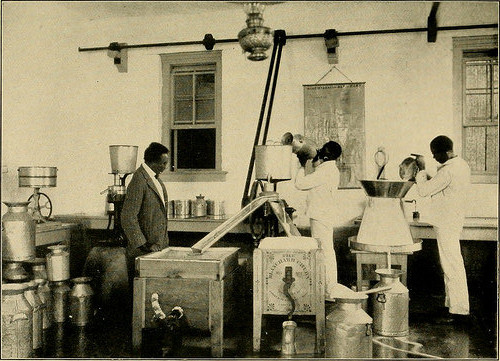In the spring of 1953, 14 African-American students at Tuskegee University in Tuskegee, Ala., received their bachelor of science degrees in nursing–and took their place in history. Not only had these young women graduated from the first BSN program established in the state of Alabama, and one of the oldest predominantly black nursing schools in continuous operation in the United States, they had also achieved something even more significant: They had successfully completed the nation’s first ever baccalaureate nursing program offered at a Historically Black College or University (HBCU).
Fifty years later, the Tuskegee University Department of Nursing is proudly celebrating the Golden Anniversary of this groundbreaking step forward in making the BSN degree–with its door-opening potential for better jobs and for graduate education–more accessible to minority students. In April, the school held a two-day commemoration event and conference on campus, followed in May by the graduation of a special 50th anniversary Heritage Class of 2003.
The Tuskegee Normal School for nurses, as it was first called, was established in September 1892 to educate young black women who wanted to learn the art of caring for the sick. It began as a two-year program, established by the university’s founder and first president, Dr. Booker T. Washington. The nursing school expanded rapidly, adding a three-year program in 1908 and becoming approved and registered by the Alabama State Board of Nurse Examiners in 1928. In 1941 the school continued its pioneering tradition by creating the nation’s first predominantly black nurse practitioner program in nurse-midwifery.
Tuskegee’s baccalaureate nursing program was the brainchild of Dr. Lillian Holland Harvey, who became the nursing school’s director in 1945. Harvey, who also served as dean from 1944 to 1973, initiated the BSN program in 1948. The first graduating class, who received their degrees in May 1953, consisted of 11 four-year students and three three-year students.
Dr. Ruth Gordon-Bradshaw, a nationally recognized nursing educator who was also the first director of the American Nurses Association’s Ethnic Minority Fellowship Program, was one of the graduates of the Class of 1953, which she recalls as being “kind of like a family. We were a very, very close-knit group.” She adds, “It was a tough program. You had to be good not only academically, but you had to also be a well-rounded lady. Dean Harvey was concerned with the whole person. She was the best, and she expected nothing but the best.”
More information and photos commemorating the Tuskegee BSN program’s 50th anniversary can be found on the university’s Web site at www.tuskegee.edu.
Photo by Internet Archive Book Images
- Providing Cultural Competency Training for Your Nursing Staff - February 15, 2016
- Cultural Competence from the Patient’s Perspective - February 11, 2016
- Careers in Nephrology Nursing - February 10, 2016



